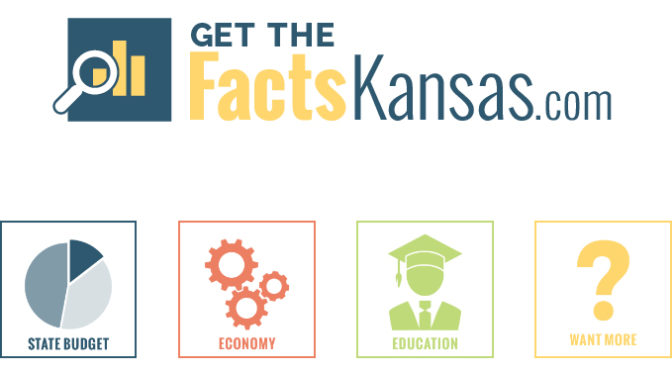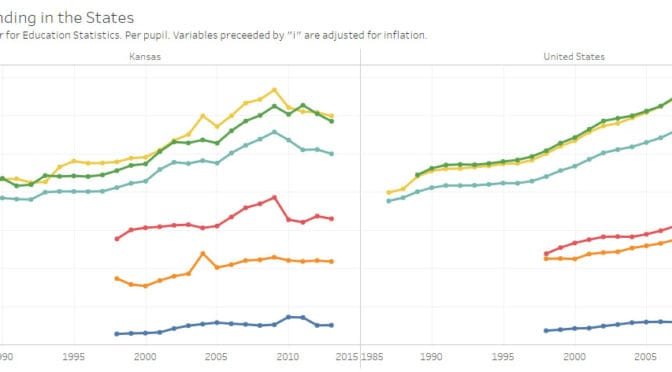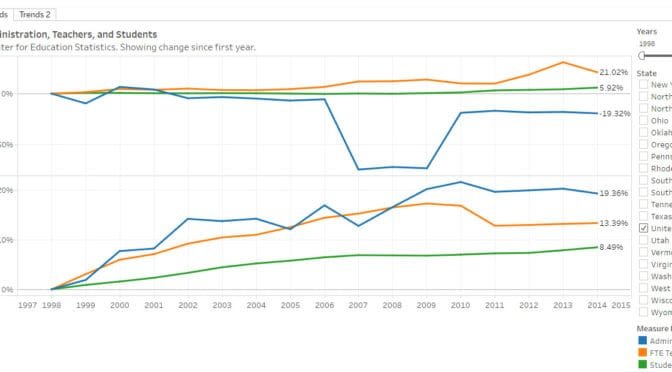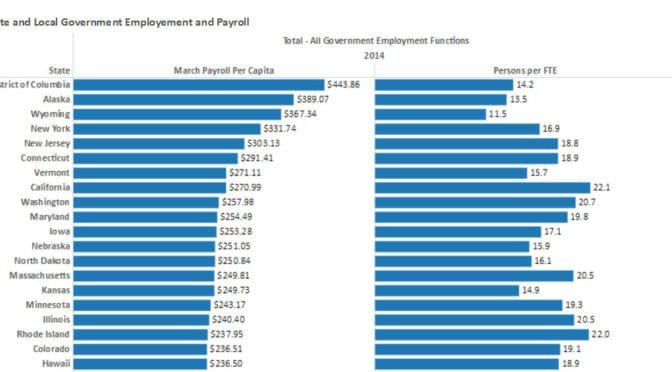Tag: Education
-

The nation’s report card and charter schools
In many states, minority students perform better on the NAEP test when in charter schools.
-

VIDEO: KPERS payments and Kansas schools
There is a claim that a recent change in the handling of KPERS payments falsely inflates school spending. The Kansas State Department of Education says otherwise.
-

GetTheFactsKansas launched
From Kansas Policy Institute and the Kansas Chamber of Commerce, a new website with facts about the Kansas budget, economy, and schools.
-

School spending in the states
School spending in the states, presented in an interactive visualization.
-

School staffing and students
Trends for the nation and each state in teachers, administrators, and students, presented in an interactive visualization.
-

David Dennis, gleeful regulatory revisionist
David Dennis, candidate for Sedgwick County Commission, rewrites his history of service on the Kansas State Board of Education.
-

Kansas government ‘hollowed-out’
Is Kansas government “hollowed-out” even though spending is rising?
-

State and local government employee and payroll
Considering all state and local government employees in proportion to population, Kansas has many, compared to other states, and especially so in education.
-
Teachers unions vs. students
There is a dilemma in American education. On the one hand, teachers are essential to student achievement. On the other, teachers unions promote self-interests of their members which are antithetical to the interests of students.